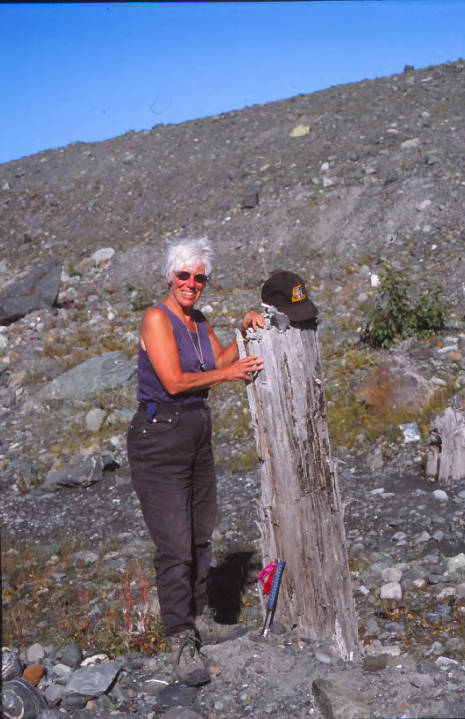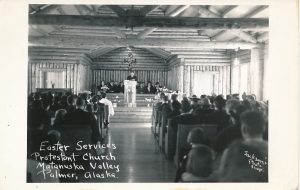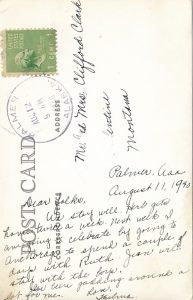Well, March isn’t going to look like our most productive month ever. Both Gwen and Arlene spent a lot of March preparing tasks to be able to do at home. Since we can’t take home collections to work on them, we’ve both been doing a lot of scanning and it looks like we might be putting a fair amount of things online on the Alaska’s Digital Archives over the next while because that is something we can do from home.
We are still keeping up with reference requests and right now email is the absolute best way to reach us. Click on the contact us link on any page on our website, it will bring up a form, and that form will come to us via email. For now we still have physical access to our collections which helps us answer your questions.
Here’s one fun thing we did this month:
We received a research request for a number of letters from a Matanuska Colony resident from 1938 to be used in a distance history class. To make these letters as accessible as possible, we put out a call on Twitter and Facebook for people who might be willing to transcribe the handwriting. When we load them up on the Alaska’s Digital Archives, we like to make handwritten documents fully searchable and fully readable for viewers who need to use screen-readers. Since most of the character recognition software out there doesn’t handle handwriting–and the extremely variable handwriting we have represented in our collections–it comes down to people reading it and typing it up for us. And wow, did we get a great response! 13 people offered their help within a day of sending out the call and while we’re still waiting on a few transcriptions to come in, we received many back on the same day they went out. Some people did several! And best of all, several of our volunteer transcribers asked if we had any more projects like this. Do we ever! Keep an eye on our Facebook account @ConsortiumLibraryArchives or Twitter @CLArchives) as we’ll be sending out another call soon: next up is a gold rush era diary. Thanks to Susi, Alice, Diane, Jen, Kristi, Nickel, Margo, Helen, Carlene, Mawi, Janet, Sharon, and Rose for all your willing spirits and helpful participation.
Materials added to the Alaska’s Digital Archives:
22 images from the Loren Taft papers, hmc-1117.
14 postcards from the Thelma Caulkins papers, hmc-1223.
25 photographs from Anne D. Pasch papers, HMC-1342.

Anne Pasch resting her hands a tree stump near Bering Glacier
In case you were wondering, Arlene (sort of) kept track of the time it took to scan the fronts and backs of the 14 postcards, transcribe what was written on them, complete the metadata required by the Alaska’s Digital Archives, and load them up. It was about 8-10 hours of work. So now you might have some sense of how much behind-the-scenes work is involved in putting materials like this up on the site. Photographs without a lot going on in them don’t take nearly as much time, we’ll admit. Like the Loren Taft slide of the willow and crowberry above: that one took maybe about 10 minutes start to finish. Postcards and other documents are pretty labor intensive, and much of that comes from the time it takes to transcribe the text.
One other fun thing we did:
We loaded up our first thing to UA Scholarworks, the University’s digital repository: our instruction handout for building simple and inexpensive book enclosures. This handout was originally developed for us by Mariecris Gatlabayan and it’s been something we end up sharing a lot. It’s a quick way for us to enclose fragile books in the Rare Books collection–they provide just that extra little bit of support for those books that are losing their covers or stitches or glue.





